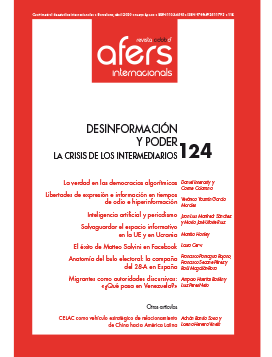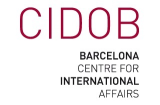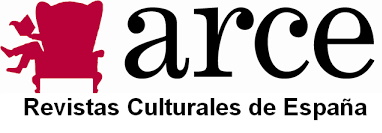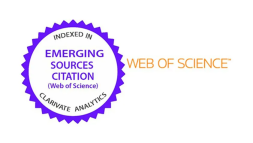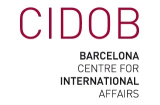An anatomy of the electoral hoax: political disinformation in Spain’s 2019 general election campaign
Keywords:
fake news, disinformation, bots, election campaign, elections, political communication, SpainAbstract
Revista CIDOB d’Afers Internacionals, nº 124
Quadrimestral (January -April 2020)
ISSN:1133-6595 | E-ISSN:2013-035X
DOI: doi.org/10.24241/rcai.2020.124.1
This paper analyses the content of the electoral hoaxes identified by factcheckers Maldita and Newtral, using as a case study the campaign for the April 28th 2019 Spanish general election. To study the context in which electoral disinformation operates, a bot was created on Twitter (@unfaking_es) that followed the activity of the accounts of the main media, political parties, candidates, official institutions and fact-checkers. Most of the 37 hoaxes analysed originated on social networks such as Twitter, Facebook and WhatsApp, and the electoral system itself was the main target of disinformation, being labelled as fraudulent. The debate on Twitter was dominated by live fact-checking carried out by left-wing media, with Pablo Casado (Popular Party) being the most frequently debunked candidate.
>> The full text articles of this issue are available only in Spanish language
References
Abel, John D. y Wirth, Michael O. «Newspaper vs. TV Credibility for Local News». Journalism & Mass Communication Quarterly, vol. 54, n.° 2 (1977), p. 371-375.
Berduygina, Oksana; Vladimirova, Tatyana y Chernyaeva, Elena. «Trends in the Spread of Fake News in the Mass Media». Media Watch, vol. 10, n.° 1 (2019), p. 122-132.
Bracken, Cheryl Campanella. «Perceived source credibility of local television news: The impact of television form and presence». Journal of Broadcasting and Electronic Media, vol. 50, n.° 4 (2006), pp. 723-741.
Campos Domínguez, Eva y García Orosa, Berta. «Comunicación algorítmica en los partidos políticos: automatización de producción y circulación de mensajes». El Profesional de la Información, vol. 27, n.° 4 (2018), p. 769-777.
Castells, Manuel. The Rise of the Network Society. Vol. I. Oxford; Malden, MA: Blackwell, 1996.
Chartprasert, Duangkamol. «How Bureaucratic Writing Style Affects Source Credibility». Journalism & Mass Communication Quarterly, vol. 70, n.° 1 (1993), p. 150-159.
Choi, Junho H., Waitt, James H. y Lynch, Michael. «Perceptions of news credibility about the war in Iraq: Why War opponents perceived the internet as the most credible medium». Journal of Computer-Mediated Communication, vol. 12, n.° 1 (2006), p. 209-229.
Comisión Europea. A multi-dimensional approach to disinformation: Report of the independent High level Group on fake news and online disinformation. Comisión Europea, (marzo de 2018) (en línea) [Fecha de consulta 10.11.2019]
Congosto, M.; Basanta-Val, P. y Sánchez Fernández, L. «T-Hoarder: A framework to process Twitter data streams». Journal of Network and Computer Applications, n.º 83 (2017), p. 28–39. https://doi.org/10.1016/j.jnca.2017.01.029
Farias Batlle, Pedro y Roses Campos, Sergio. Acerca de la encuesta de credibilidad de la información en los medios; en Farias Batlle, Pedro. Informe de la Profesión Periodística 2011. Madrid: Asociación de la Prensa de Madrid, 2011.
Garrett, Kelly; Gvirsman, Shira Dvir; Johnson, Benjamin K.; Tsfati, Yariv; Neo, Rachel y Dal, Aysenur. «Implications of pro- and counterattitudinal information exposure for affective polarization». Human Communication Research, vol. 40, n.° 3 (2014), p. 309-332.
Graves, Lucas. Deciding what’s true: The rise of political fact-checking in American journalism. Nueva York: Columbia University Press, 2016.
Greenberg, Bradley S. «Media Use and Believability: Some Multiple Correlates». Journalism Quarterly, vol. 43, n.° 4 (1966), p. 665-670.
Gronke, Paul y Cook, Timothy E. «Disdaining the media: The American public’s changing attitudes toward the news». Political Communication, vol. 24, n.° 3 (2007), p. 259-281.
Gunther, Albert C. «Biased Press or Biased Public? Attitudes Toward Media Coverage of Social Groups». Public Opinion Quarterly, vol. 56, n.° 2 (1992), p. 147-167.
Gutiérrez-Rubí, Antoni. «Bots para la comunicación política». Página web gutierrez-rubi.es, (2 de noviembre de 2016) (en línea) [Fecha de consulta: 08.10.2019] https://www.gutierrez-rubi.es/2016/11/02/bots-en-comunicacion-politica/
Hall Jamieson, Kathleen. Cyberwar: How Russian hackers and trolls helped elect a president: What we don’t, can’t, and do know. Oxford: Oxford University Press, 2018.
Howard, Philip. New media campaigns and the managed citizen. Cambridge: Cambridge University Press, 2006.
Ibelema, Mineabere y Powell, Larry. «Cable Television News Viewed as Most Credible. Newspaper Research Journal, vol. 22, n.° 1 (2001), p. 41-51.
Igartua, Juan José. Métodos cuantitativos de investigación en comunicación. Barcelona: Bosch, 2006.
Kalogeropoulos, Antonis, Suiter, Jane y Eisenegger, Mark. «News Media Trust and News Consumption: Factors Related to Trust in News in 35 Countries». International Journal of Communication, vol. 13, (2019), p. 3.672-3.693.
Keller, Tobias R. y Klinger, Ulrike. «Social Bots in Election Campaigns: Theoretical, Empirical, and Methodological Implications». Political Communication, vol. 36, n.° 1 (2019), p. 171-189.
Krippendorff, Klaus. Metodología de análisis de contenido: Teoría y práctica. Barcelona: Paidós, 2002, Kuiken, Jeffrey; Schuth, Anne; Spiters, Martijn y Marx, Maarten. «Effective Headlines of Newspaper Articles in a Digital Environment». Digital Journalism, vol. 5, n.° 10 (2017), p. 1.300-1.314 (en línea) [Fecha de consulta: 07.10.2019] https://www.tandfonline.com/doi/abs/10.1080/21670811.201
1279978
Lee, Eun Ju y Shin, Soo Yun. «When the Medium Is the Message: How Transportability Moderates the Effects of Politicians’ Twitter Communication». Communication Research, vol. 41, n.° 8 (2014), p. 1.088-1.110.
Luchok, Joseph A. y McCroskey, James C. «The effect of quality of evidence on attitude change and source credibility». Southern Speech Communication Journal, vol. 43, n.° 4 (1978), p. 371-383.
Magallón-Sosa, Raúl De. «Nuevos formatos de verificación. El caso de Maldito Bulo en Twitter». Sphera publica. Revista de ciencias sociales y de la comunicación, vol. 1, n.° 18 (2018), p. 41-65.
McCroskey, James C. y Mehrley, R. Samuel. «The effects of disorganization and nonfluency on attitude change and source credibility». Speech Monographs, vol. 36, n.° 1 (1969), p. 13-21.
Meyen, Michael y Schwer, Katja. «Credibility of media offerings in centrally controlled media systems: A qualitative study based on the example of East Germany». Media, Culture and Society, vol. 29, n.° 2 (2007), p. 284-303.
Moya-sánchez, Miguel y Herrera-Damas, Susana. «Cómo medir el potencial persuasivo en twitter: Propuesta metodológica». Palabra Clave, vol. 19, n.° 3 (2016), p. 838-867.
Mulder, Ronald. «A Log-Linear Analysis of Media Credibility». Journalism Quarterly, vol. 58, n.° 4 (1981), p. 635-638 (en líena) [Fecha de consulta: 06.10.2018] https://journals.sagepub.com/doi/abs/10.1177/107769908105800420?journalCode=jmqb
Oyedeji, T. A. «Incredible Media or Incredulous Audience: The effects of Polarization and Partisanship on Media Credibility». AEJMC Annual Convention Program de 2007 Washington D.C.
Pont, Carles; Besalú, Reinald; Rovira, Edgar; Castelo, Santi y Sánchez, Metzeri. Análisis de la credibilidad de la información política en el entorno digital (Facebook, WhatsApp, prensa digital y televisión). Barcelona: Càtedra ideograma-UPF de Comunicació Politica i Democràcia, 2019 (en línea) [Fecha de consulta: 10.11.2019] https://www.upf.edu/documents/220602201/0/CátedraIdeograma-UPF_Análisis+de+la+credibilidad+de+la+información.pdf/f3e546db-4819-5a11-6838-b1cda874e6a7
Sánchez, José Javier. «Análisis de contenido cuantitativo de medios». En: Berganza, M. Rosa y Ruiz, José (coords.). Investigar en Comunicación. Guía práctica de métodos y técnicas de investigación social en comunicación. Madrid: McGraw Hill, 2005, p. 207-228.
Shao, Chengcheng; Ciampaglia, Giovanni Luca; Flammini, Alessandro y Menczer, Filippo. «The spread of low-credibility content by social bots». Nature Communications, n.° 9 (2018) (en línea) [Fecha de consulta: 10.09.2019] https://www.nature.com/articles/s41467-018-06930-7
Siles, Ignacio. «Inventing Twitter: An Iterative Approach to New Media». International Journal of Communication, vol. 7 (2013), p. 2105–2127.
Slater, Michael D. y Rouner, Donna. «How message evaluation and source attributes may influence credibility assessment and belief change». Journalism and Mass Communication Quaterly, vol. 73, n.° 4 (1996), p. 974-991.
Vaccari, Cristian y Valeriani, Augusto. «Dual Screening, Public Service Broadcasting, and Political Participation in Eight Western Democracies». The International Journal of Press/Politics, vol. 23, n.°3 (2018), 367-388.
Valenzuela, Sebastián; Halpern, Daniel; Katz, James E. y Miranda, Juan Pablo. «The Paradox of Participation Versus Misinformation: Social Media, Political Engagement, and the Spread of Misinformation». Digital Journalism, vol. 7, n.° 6 (2019), p. 802-823 (en línea) [Fecha de consulta: 09.09.2019] https://www.tandfonline.com/doi/full/10.1080/21670811.2019.1623701
Vallone, Robert P.; Ross, Lee y Lepper, Mark R. «The hostile media phenomenon: biased perception and perceptions of media bias in coverage of the Beirut massacre». Journal of Personality and Social Psychology, vol. 49, n.° 3 (1985), p. 577-585.
Vázquez-Herrero, Jorge; Vizoso, Ángel y López García, Xosé. «Innovación tecnológica y comunicativa para combatir la desinformación: 135 experiencias para un cambio de rumbo». El Profesional de la Información, vol. 28, n.° 3 (2019), p. 1-12.
Walter, Nathan; Cohen, Jonathan; Holbert, R. Lance y Morag, Yasmin. «Factchecking: A meta-analysis of what works and for whom». Political Communication, (2019, (en línea) https://doi.org/10.1080/10584609.2019.1668894
Westley, Bruce H. y Severin, Werner J. «Some Correlates of Media Credibility». Journalism & Mass Communication Quarterly, vol. 41, n.° 3 (1964), p. 325-335.

